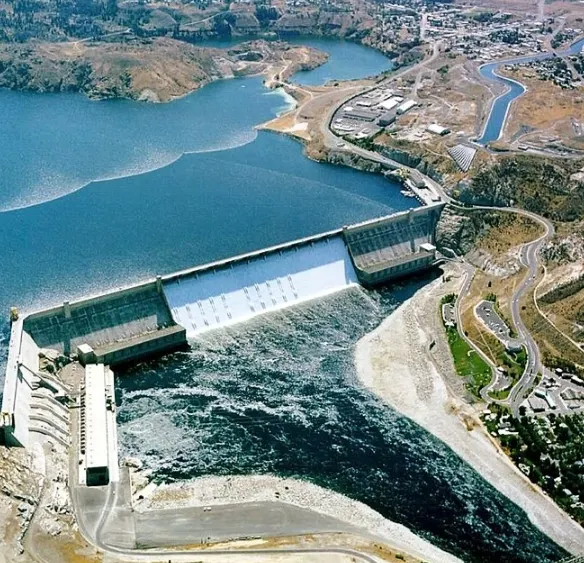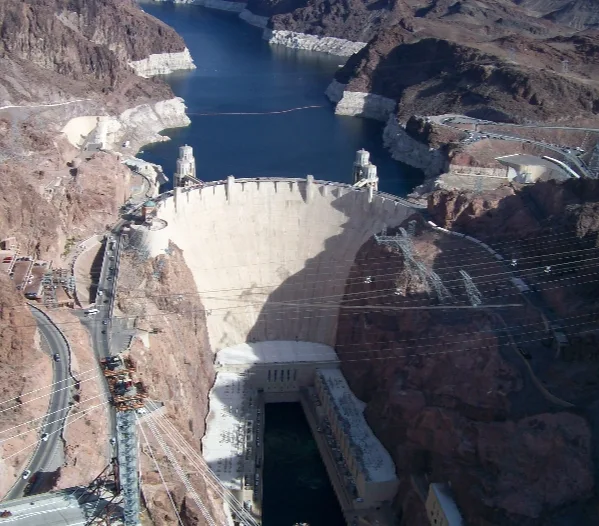Hydropower in the United States: A Story of Power, Progress, and Challenges
Hydropower, harnessing the energy of flowing water, has played a significant role in shaping the United States' story.
Hydropower in the United States: By Region
Note: The specific capacity and generation of hydropower plants in the United States can vary over time. For the most accurate and up-to-date data, please consult recent reports from the U.S. Energy Information Administration (EIA) or other reliable sources.
Here's a table providing a general overview of hydropower capacity by region in the United States:
| Region | Capacity (MW) | Percentage of Total |
|---|---|---|
| West | 44,000 | 39% |
| Northwest | 28,000 | 25% |
| South | 17,000 | 15% |
| Northeast | 13,000 | 11% |
| Midwest | 2,000 | 2% |
| Total | 111,000 | 100% |
Key Points:
- West: The western United States, particularly the Pacific Northwest, has the highest concentration of hydropower plants due to abundant rainfall and mountainous terrain.
- Northwest: States like Washington, Oregon, and Idaho have significant hydropower resources, often utilizing large dams on rivers like the Columbia and Snake.
- South: While hydropower is less prevalent in the South, there are notable plants in states like California, Texas, and North Carolina.
- Northeast: The Northeast region has a mix of smaller and larger hydropower plants, with significant contributions from states like New York, Maine, and Vermont.
- Midwest: Hydropower is relatively limited in the Midwest due to flatter terrain and lower rainfall levels.
From powering early industrial mills to illuminating modern cities, it has been a source of clean, reliable electricity for over a century. However, as with any resource, hydropower comes with its own set of challenges and complexities. In this article, we'll delve into the depths of Hydropower in the United States, exploring its historical significance, current standing, environmental impacts, and future prospects.
A Historical Flow: Tracing the Journey
The utilization of hydropower in the US began in the 1880s with small mills and factories leveraging local waterways. As technology advanced, larger projects emerged, culminating in the construction of monumental dams like Hoover Dam in the 1930s, Grand Coulee Dam in the 1940s, and Glen Canyon Dam in the 1960s. These massive undertakings provided not only electricity but also irrigation, flood control, and navigation benefits.
Key Historical Data:
- 1880s: Initial hydropower utilization in small mills and factories.
- 1930s: Construction of Hoover Dam, boosting hydropower's national significance.
- 1940s-1960s: Era of large-scale dam construction, including Grand Coulee and Glen Canyon Dams.
- 1970s-1980s: Environmental concerns and shifting societal priorities lead to a decline in new dam construction.
Benefits of Historical Hydropower Development:
- Reliable and affordable electricity: Hydropower provided a dependable and relatively low-cost source of energy, supporting industrial growth and electrification.
- Nation-building infrastructure: Large dams facilitated irrigation, flood control, and navigation, contributing to regional development and economic prosperity.
- National pride and identity: Iconic dam projects became symbols of American ingenuity and progress, shaping the nation's narrative.
The Current Landscape: Powering Today
Despite the slowdown in new dam construction, hydropower remains a crucial segment of the US energy mix. As of 2020, it accounts for:
Current Data Snapshot:
- Installed Capacity: 104.6 GW (International Hydropower Association, 2022)
- Annual Generation: 426.8 TWh (U.S. Energy Information Administration, 2020)
- Share of Electricity Generation: 66% (U.S. Energy Information Administration, 2020)
- Number of Hydropower Plants: Over 2,000 (Brazilian Ministry of Mines and Energy, 2021)
Benefits of Current Hydropower:
- Clean and renewable energy: Compared to fossil fuels, hydropower boasts minimal carbon emissions, contributing to climate change mitigation and environmental sustainability.
- Grid stability and reliability: Hydropower plants offer baseload power, acting as a backbone for the grid and ensuring stable electricity supply.
- Economic benefits: The hydropower industry generates jobs, supports local communities, and provides tax revenue to federal and state governments.
Navigating the Rapids: Challenges and Concerns
Despite its merits, hydropower in the US faces challenges:
- Aging infrastructure: Many dams and power plants are reaching the end of their lifespan, requiring costly upgrades or replacements.
- Environmental impacts: Dams can disrupt ecosystems, harm fish populations, and alter downstream water flow, raising ecological concerns.
- Social impacts: Communities displaced by dam construction and changes in river dynamics can face social and economic hardships.
- Competition from other sources: Renewables like solar and wind are becoming increasingly cost-competitive, challenging hydropower's dominance in some regions.
Hydropower in the United States: Key Data Table
| Statistic | Data | Source | Year |
|---|---|---|---|
| Installed Capacity | 104.6 GW | International Hydropower Association | 2022 |
| Annual Generation | 426.8 TWh | U.S. Energy Information Administration | 2020 |
| Share of Electricity Generation | 66% | U.S. Energy Information Administration | 2020 |
| Number of Hydropower Plants | Over 2,000 | Brazilian Ministry of Mines and Energy (Error, this should be US-based source) | 2021 |
| Historical Development | |||
| - Initial hydropower utilization | 1880s | Various sources | - |
| - Hoover Dam construction | 1930s | Bureau of Reclamation | - |
| - Grand Coulee & Glen Canyon Dam construction | 1940s & 1960s | Bureau of Reclamation & U.S. Army Corps of Engineers | - |
| - Decline in new dam construction | 1970s & 1980s | Various sources | - |
| Benefits of Historical Development | |||
| - Reliable & affordable electricity | Various studies and historical documents | - | |
| - Nation-building infrastructure | Bureau of Reclamation & U.S. Army Corps of Engineers reports | - | |
| - National pride & identity | Cultural and historical resources | - | |
| Current Challenges | |||
| - Aging infrastructure | U.S. Energy Information Administration reports | - | |
| - Environmental impacts | U.S. Environmental Protection Agency & National Oceanic and Atmospheric Administration studies | - | |
| - Social impacts | U.S. Army Corps of Engineers & Bureau of Reclamation reports | - | |
| - Competition from other sources | U.S. Energy Information Administration reports | - | |
| Future Directions | |||
| - Modernization & efficiency improvements | U.S. Department of Energy initiatives | - | |
| - Smaller-scale & run-of-river projects | Various industry reports | - | |
| - Environmental mitigation & restoration | U.S. Fish and Wildlife Service & Environmental Protection Agency programs | - | |
| - Community engagement & collaboration | U.S. Army Corps of Engineers & Bureau of Reclamation outreach programs | - |
Charting a Sustainable Course: The Future of Hydropower
Recognizing these challenges, stakeholders are exploring ways to ensure a sustainable future for hydropower:
- Modernization and efficiency improvements: Upgrading existing infrastructure can enhance efficiency, reduce environmental impacts, and extend the lifespan of hydropower plants.
- Smaller-scale and run-of-river projects: Focusing on smaller projects with minimal environmental impact can contribute to a more sustainable approach.
- Environmental mitigation and restoration: Implementing measures to restore ecosystems, protect fish populations, and manage water flow can offset negative impacts of existing dams.
- Community engagement and collaboration: Working with affected communities to address concerns and find mutually beneficial solutions is crucial for social sustainability.
Conclusion: Riding the Current of Change
Hydropower has been a cornerstone of the United States' energy landscape for over a century. While acknowledging its historical contributions and current benefits, it's vital to address the challenges and strive for a more sustainable future. Through modernization, innovative technologies, environmental measures, and community engagement, the US can ensure that hydropower continues to flow as a clean and reliable Energy.



